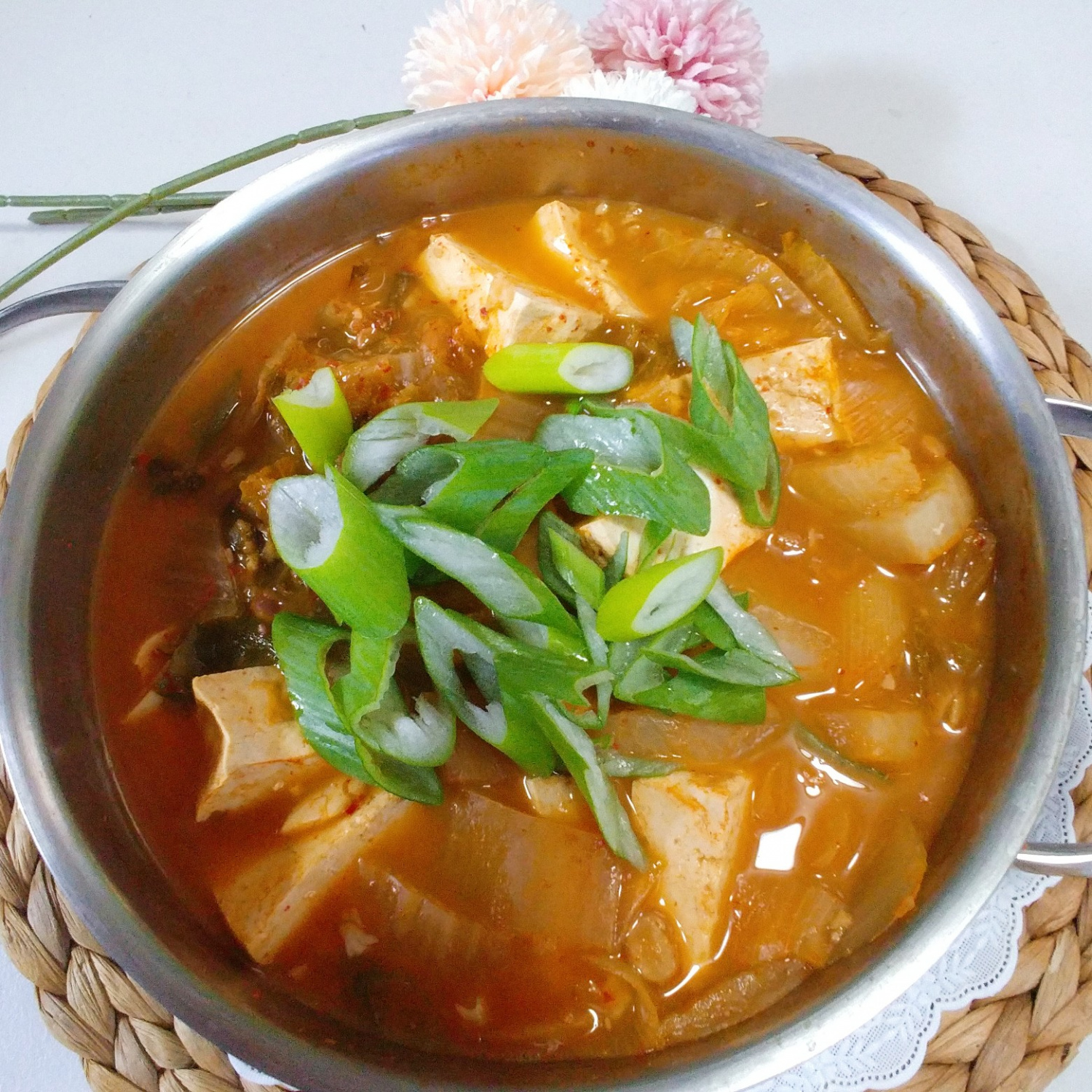Hearty Homemade Cheonggukjang Stew
Making Delicious Cheonggukjang #Mom’s Cheonggukjang Recipe~

My parents made this cheonggukjang using beans from their recent harvest. I’ve made a savory cheonggukjang stew perfect for the chilly weather! This recipe brings back warm memories and is a staple on Korean tables.
Cheonggukjang Stew Ingredients- 250g Cheonggukjang (fermented soybean paste)
- 1/3 block Firm Tofu
- 1/4 head Aged Kimchi
- 1/10 Korean Radish (Muu)
- 1/2 stalk Green Onion
- 1 pack Anchovy & Kelp Stock pack
- 3 pieces Dried Kelp (Dashima)
- 1L Water
Seasoning & Others- 1 Tbsp Minced Garlic
- 1 Tbsp Minced Garlic
Cooking Instructions
Step 1
First, we’ll create a savory broth, the foundation of a delicious cheonggukjang stew. Pour 1L of water into a pot. Add 1 anchovy and kelp stock pack, 3 pieces of dried kelp, and 1/10 of a Korean radish cut into bite-sized pieces. Simmer gently over medium heat for about 15-20 minutes to extract a rich flavor. This will create a deep-flavored broth.

Step 2
Prepare the ingredients for the cheonggukjang stew. Rinse the aged kimchi to remove excess brine and cut it into bite-sized pieces. Cut the firm tofu into large cubes. Slice the green onion diagonally. Have 1 tablespoon of minced garlic ready.

Step 3
Once the broth has sufficiently steeped, remove the dried kelp and the stock pack. Set them aside. You can reuse the kelp for other dishes, and removing the stock pack ensures a clear, unclouded stew.

Step 4
The Korean radish that was simmered in the broth can become too soft if left in too long. So, remove it now and set it aside. It will be re-added later, so it should be tender at this stage.

Step 5
Add the pre-cut aged kimchi to the pot. Let it simmer for a bit to meld with the broth. The tangy flavor of the aged kimchi will combine with the broth to create a deeper taste.

Step 6
Now it’s time for the star ingredient: cheonggukjang. You can either mash the fermented soybeans from the stock pack or add 250g of store-bought cheonggukjang to the pot. It’s best to mash it with a spoon before adding to ensure it dissolves well into the broth. The savory aroma of cheonggukjang will surely whet your appetite.

Step 7
After adding the sliced kimchi, now add the cheonggukjang and stir to break it apart. It’s important to stir the cheonggukjang as it cooks to prevent clumps and ensure it mixes smoothly with the broth. The rich scent of cheonggukjang will be inviting.

Step 8
Add the reserved Korean radish back into the pot. As it simmers again in the hot broth, its natural sweetness will be released, enriching the stew’s flavor. Taste and adjust seasoning with salt or soy sauce if needed.

Step 9
Carefully add the large cubes of firm tofu to the pot. Stir gently to avoid breaking the tofu. The tofu will warm through and add a soft texture.

Step 10
Add the diagonally sliced green onions and 1 tablespoon of minced garlic for a fresh, aromatic touch. The refreshing taste of green onions and the mild pungency of garlic will elevate the stew’s flavor. Continue to simmer until all ingredients are well combined.

Step 11
Once the cheonggukjang stew starts to vigorously bubble, add 1 tablespoon of minced garlic. Garlic can develop a bitter taste if overcooked, so adding it near the end is best. Keep an eye on the heat to prevent it from boiling over.

Step 12
Add the reserved Korean radish, which has been cut into bite-sized pieces, back into the pot. Since it was already partially cooked, it will soften quickly. The radish will absorb the flavors of the stew and add sweetness.

Step 13
Finally, generously add the diagonally sliced green onions. The fresh aroma of the green onions will further enhance the cheonggukjang stew’s deliciousness. Simmer a little longer until all the ingredients are cooked through and the flavors have melded together, and your flavorful cheonggukjang stew will be ready!



